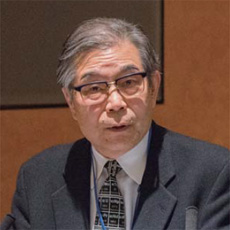Expectations for Achievements from the Four Centers over the Remaining Four Years of the Element Strategy Initiative: To Form Core Research Centers
With the original program directors of this ten-year project, Drs. Shinji Murai and Akira Sawaoka, stepping down in the fourth and sixth years, respectively, I have been appointed to take over the position. As the program director who will harvest the fruits of the final four years, I feel a heavy responsibility. I am determined to carry out my functions to the best of my ability and to lead this program while in close communication with each research center.
Here, I’d like to summarize the goals for each of the centers in the remaining four years. While several notable achievements have already begun to emerge, the future of this initiative holds great promise.
ESICMM
The development of 2-14-1 Dy-free neodymium magnets and extreme performance RFe12 magnetic materials
ESICB
The reduction in use or replacement of palladium, rhodium, and platinum in automotive catalysts and the replacement of lithium and cobalt with sodium and iron in secondary batteries
TIES
The development of materials capable of withstanding actual use based on materials informatics and utilizing abundant elements and the diverse structural and chemical states of materials
ESISM
The development of steel, titanium, and magnesium structural materials having both high strength and ductility by fabricating bulk nanostructured metals and by controlling the nucleation of plastic deformation at grains and grain boundaries
This national project for element strategy research is not merely a problem-solving project, but rather an approach aimed at formulating science-based theories that can lead to innovation creation and industrial applications. The speed of recent technological innovation in industry has at times been awe-inspiring. This national project must be one that industry can trust, respect, and expect results from. Accordingly, each center must closely share information with the industrial world even more so than they have to date. It is my hope that this approach will lead to the formulation of high-level scientific theories that will form a foundation for industrial applications and social implementation and the creation of innovative materials based on those theories.

Kohei Tamao
Associate Program Director, Element Strategy Initiative
Director, RIKEN Global Research Cluster